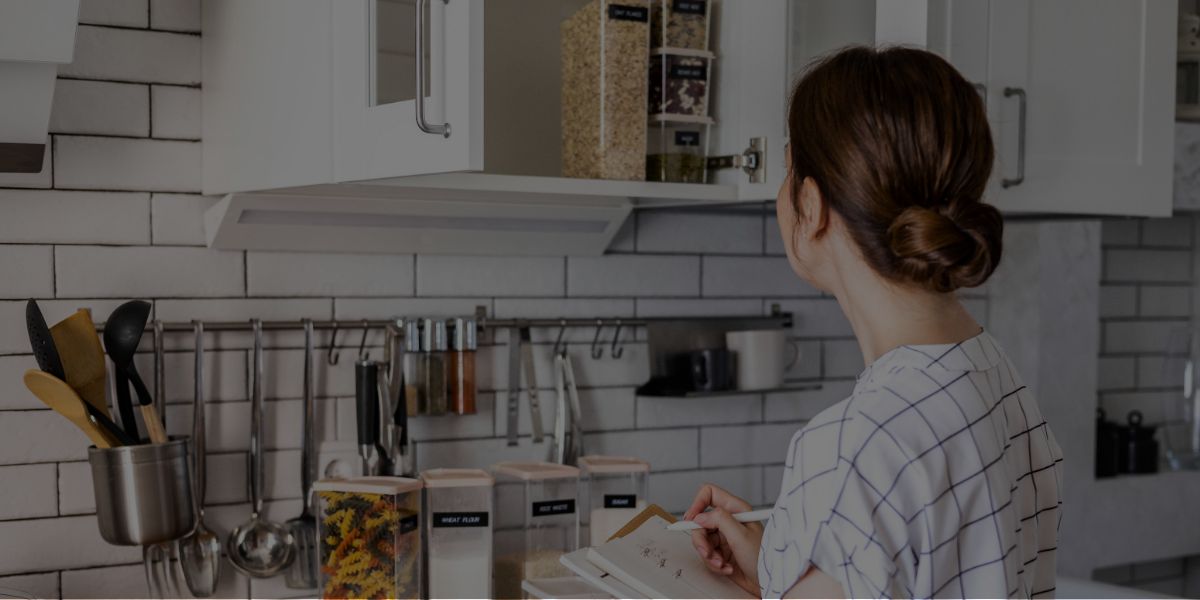A career in professional organizing may be the perfect fit for you if you’re looking for a way to help people and make a difference in their lives. But what does a day in the life of a professional organizer actually look like?
In this article, we’ll answer some commonly asked questions. We’ll also break down what a typical day looks like for someone working in this field!
Hang on! Before we dive in, have you read our Ultimate Guide on how to become a professional organizer (even if you have no experience)? If not, make sure to check it out here!
What Does a Professional Organizer Do?
A professional organizer is someone who helps people to organize their space, time, and belongings. This can be done in both residential and commercial settings. A professional organizer will work with their clients to declutter, create systems, and develop habits that lead to a more organized life.
Professional organizers typically specialize in one or more areas, such as:
- Home organization
- Office organization
- Time management
- Moving and relocation services
- Event planning
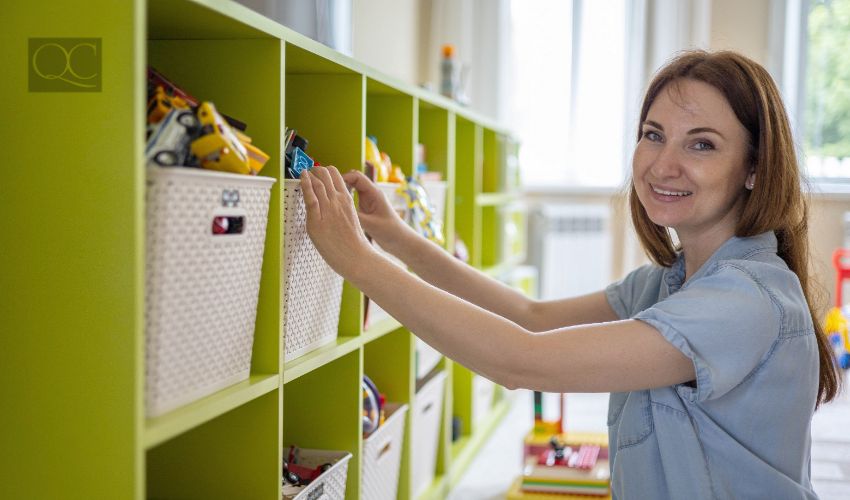
What are the Duties of a Professional Organizer?
The common duties of a professional organizer vary depending on the needs of their clients. However, there are some common tasks that most professional organizers perform on a daily basis. These tasks may include:
- Meeting with clients to assess their needs
- Developing customized organizing plans
- Decluttering and organizing spaces
- Donating or disposing of unwanted items
- Helping clients develop new habits and routines
How Many Hours Does a Professional Organizer Work?
The hours of a professional organizer can also vary depending on the client’s needs. Some organizers work with clients during regular business hours. Others may offer evening or weekend appointments to accommodate busy schedules. Ultimately, you’ll be the one to decide what works best for you!
Either way, there is often some flexibility in terms of scheduling – which can be a great perk for those who value work/life balance!
What Is It Like Being a Professional Organizer?
Your job will revolve around helping your clients declutter and organize their homes or offices. But this can be a physical and emotional process for some people, which is why it’s important that you possess a few key traits.
For instance, you’ll need to be patient and have a compassionate demeanor. You’ll also need to be able to think on your feet and come up with creative solutions to unique problems. After all, no two organizing projects are the same. So, you’ll need to be flexible in your approach.
In addition, professional organizers must be excellent communicators. You’ll need to clearly explain your vision for the project to your client, as well as listen to their needs and concerns.
Can I Make a Living as a Professional Organizer?
Yes, you can absolutely make a living as a professional organizer! In fact, many organizers are able to earn a very comfortable salary and work this job full-time. The average hourly rate for a professional organizer is $25 – $50, depending on their experience and location.
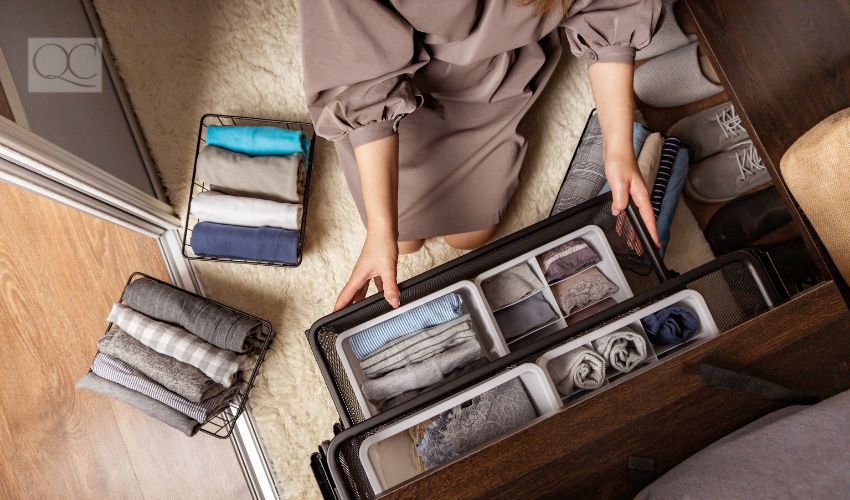
The Average Yearly Salary in Professional Organizing
To put this into perspective, here are some up-to-date annual salaries for professional organizers, based on some example countries:
- United States: Between approx. $37,000 USD and $60,800 USD (Source: Salary.com)
- Canada: Between approx. $35,000 CAD to $67,000 CAD (Source: Glassdoor)
- United Kingdom: Between approx. £20,000 GBP and £31,000 GBP (Source: Salary Expert)
- New Zealand: Between approx. $41,500 NZD and $46,000 NZD (Source: Salary Expert)
- Australia: Between approx. $40,000 AUD and $55,700 AUD (Source: Salary Expert)
Did you know that you can become an Advanced International Organizing Professional (AIOP) in as little as 3-6 months by enrolling in QC Design School‘s self-paced, online Professional Organizing Course? It’s true!
What’s In a Professional Organizer Tool Kit?
This is a great question! A professional organizer’s toolkit will vary depending on their specific organizing specialty. However, there are some common items that every organizer should have on hand, such as a:
- Label maker
- Tape measure
- Stapler and staples
- Hole punch
- Whiteboard or chalkboard
It’s also worth stocking up on assorted baskets, bins, and containers that you can bring to the job as well.
Working As a Professional Organizer
Alright, let’s get to the main event: what a day in the life of a professional organizer looks like! Importantly, your common, daily tasks will depend on the type of day you’re having – an office day or a project day.

A Day In The Life of a Professional Organizer
Office Days
Many professional organizers run their own business. This means that they typically have at least one day per week (if not more) where they’re working from their home office.
On these days, you can expect to spend a good portion of your time working on administrative tasks, such as:
- Answering phone calls and emails from current and potential clients
- Updating your website and social media platforms
- Filling out paperwork (e.g. contracts, invoices, etc.)
- Creating marketing materials (e.g. business cards, flyers, etc.)
- Scheduling appointments
- Researching products and organizing solutions
- Developing organizational systems for both home and business clients
- Preparing for upcoming projects, etc.
Unless you’re into this type of work, office days can be a little more mundane compared to the days when you actually get to go out and help people get their lives together. However, they’re an essential part of running a successful professional organizing business!
Project Days
On project days, you’ll get to leave the confines of your home office and go out into the real world to help people get their stuff together!
The first thing you’ll do when you arrive at a client’s home is assess the situation. This usually involves walking around with the client and getting a feel for what needs to be done. Once you have a good understanding of the scope of the project, it’s time to roll up your sleeves and get to work!
This might involve:
- Sorting through cluttered rooms
- Purging unwanted items
- Donating or disposing of unused belongings
- Developing an organizational system that works for both the client and their space
- Labeling storage containers
- Installing shelves, hooks, and other organizational tools
Project days might also involve wrapping up loose ends. This part of the job can include:
- Providing the client with a list of recommended products
- Scheduling a follow-up appointment to check in on the client’s progress
- Giving the client some final tips and tricks for maintaining their newly organized space
As you can see, no two days are alike – which is part of what makes this job so interesting!
Maintenance Days
In the world of professional organizing, you will also occasionally deal with maintenance projects – rather than projects where you and your client are starting from ground zero. Maintenance days are typically done with past and/or repeat clients.
On these days, you’ll be responsible for coming up with new ways to keep the client’s space organized and functional. This might involve:
- Assessing the client’s current organizational system
- Making adjustments to the system as needed
- Adding new storage solutions
- Updating labels
- Training the client (and/or their family) on how to use and maintain the system, etc.
Maintenance days are a great way to stay connected with past clients and ensure that they’re still happy with your services. They’re also a great source of referrals!
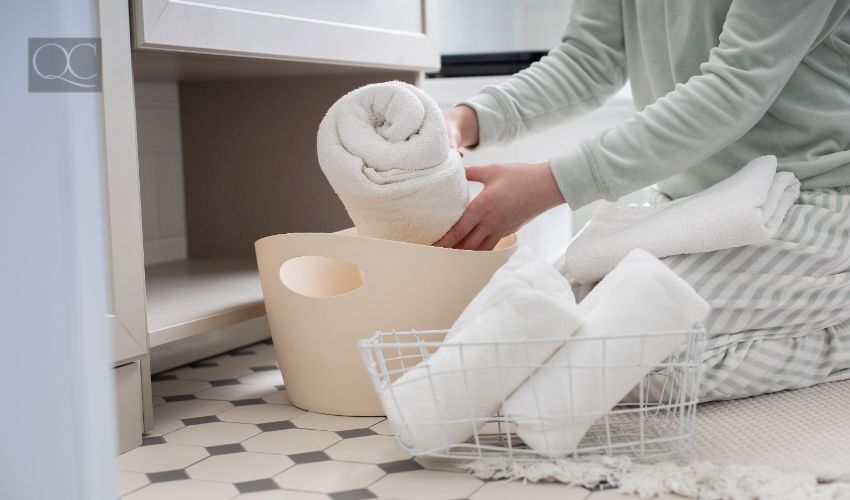
Working with Companies
On days like this, your duties might include:
You may also have days where instead of working with your own (individual) client, you collaborate with other types of businesses. Some common examples of this might be moving companies, professional organizing companies, interior decorating companies, etc.
- Assisting with a home or office move
- Helping to unpack and organize belongings in a new space
- Coordinating with other members of the team (e.g. decorators, painters, etc.) to ensure that the project runs smoothly, etc.
Clearly, a career in professional organizing is far from boring! If you’re looking for a job that’s both challenging and rewarding, this just might be the perfect fit for you.
Common Professional Organizer Forms
Let’s circle back to something extremely important for a moment… When discussing “office days”, we briefly mentioned paperwork. But that’s a very broad term, so let’s clarify that a bit!
There are also several forms and checklists that every organizer should have at their disposal. These can be used to help streamline the organizing process for both you and your client. A few examples include a:
- Project assessment form
- Consultation form
- Room-by-room checklist
- Space utilization checklist
- Time management analysis questionnaire
- Client intake form
The Client Intake Form for a Professional Organizer
The client intake form is probably the most important form that you’ll use as an organizer. Why? Because it’s basically a “get to know you” questionnaire that allows you to collect all of the information you need to successfully complete a project!
What To Ask in The Professional Organizer Questionnaire for Clients
When putting together this form for your clients, you’ll need to include blank sections for the following information:
- Your client’s name
- Their phone number
- Their email address
- The best time to reach them
- Their mailing address
- Type of residence (house, condo, apartment, etc.) they live in
- The number of occupants in the home/office
- Organizing goals
- Their budget for the project
- Project timeline
- Their scheduling availability, etc.
The goal is that, by the end of the consultation, you’ll have a much better understanding of your client, their needs, and what they’re hoping to achieve. This will allow you to put together a customized plan to help them reach their goals – which is what they’re paying you for, after all!
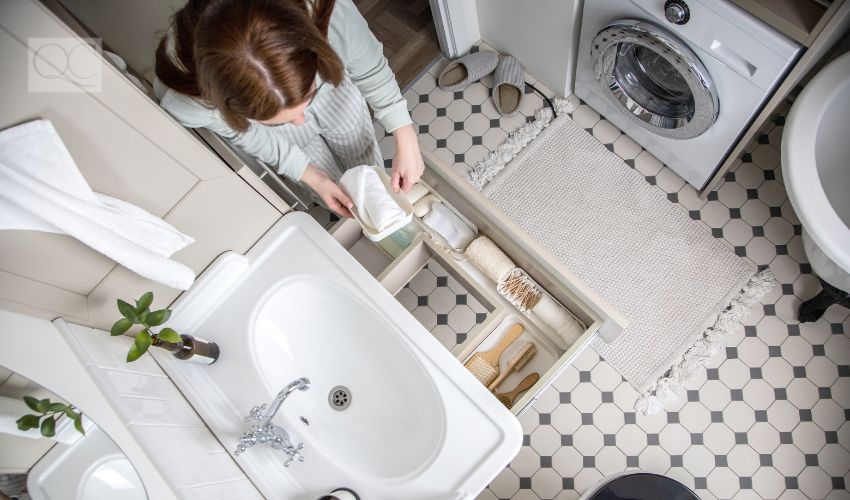
Free Professional Organizer Consultation Form
While some organizers choose to develop their own forms and checklists, others prefer to use free, pre-made templates that are available online or in organizing resources. If you decide to go this route, just be sure that you find forms that are relevant to your specific niche and target market’s home is assess the situation.
Performing The Assessment
This usually involves walking around with the client and getting a feel for the space, as well as discussing their goals for the project. After the assessment is complete, you’ll sit down with the client and review your findings.
At this point, you’ll also be able to provide the client with a rough estimate of how much the project will cost and how long it will take to complete. If the client is happy with your proposal, you’ll schedule a time to get started on the project!
Contracts
You’ll also need to learn how to write an airtight contract. After all, you’ll be working in people’s homes and handling their personal belongings. So, it’s important that both you and your client are protected in case something goes wrong.
Professional Organizer Contract Template
Never written a business contract before? No problem!
Here are some pieces of information you should ensure to include when developing yours:
- A detailed description of the services you’ll be providing
- The total cost of the project, including any materials or supplies that will need to be purchased
- A payment schedule
- The length of the project
- A cancellation policy
- Signatures from both you and the client
By including all of this information in your contract, you can help avoid any misunderstandings or disagreements down the road. And that’s always a good thing!
If you still need a little more guidance, this article by Contracts Counsel goes into a lot of depth regarding all things business contract-related!

Helpful Resources
Before we wrap things up, we wanted to provide you with some additional resources that may come in handy for you as you get your career started!
Before You Launch Your Career
- How to Become a Professional Organizer: Start Your Career Today!
- How to Start a Business as a Professional Organizer
- Professional Organizers: Where Does Your Work Start?
- 5 Signs You’re Destined to Be a Professional Organizer
- How to Become a Professional Organizer: Do’s and Don’ts
- 4 Emotional Skills You Need to Be a Professional Organizer
- 3 Reasons You NEED Professional Organizer Training!
- MORE Than Putting Things Away: What a Certified Professional Organizer Does
- Hoarding: When Do People Seek Out a Certified Professional Organizer?
- Lessons From a Professional Organizer Course All Designers Should Know
- 6 Clients Who Don’t Know They Need a Professional Organizer
- Top 5 Reasons People Call a Professional Organizer
- Professional Organizing, Room-by-Room
Awesome Career Advice That’ll Help You Succeed
- Starting an Organizing Business: The Professional Organizer Salary
- 5 Mistakes That’ll Hurt Your Professional Organizer Salary
- Finding Professional Organizer Jobs: How to Network Like a Pro!
- 3 Clients You Should Blacklist From Your Professional Organizing Business
- How to Market Your Professional Organizing Services to Small Businesses
- 5 Reasons Employers Love Your Professional Organizer Certification
- 6 Apps to use With Your Professional Organizer Certification
- 4 Unique Places to Work with a Professional Organizer Certification
- Boost Your Professional Organizer Salary with Social Media
- Finding Clients With Your Professional Organizing Certification

Conclusion
We hope this article has given you a better understanding of what it’s like to work as a professional organizer! If you’re thinking about starting a career in this field, we encourage you to do some additional research and reach out to other professionals for advice.
And, if you’re already working as a professional organizer, be sure to let us know what a typical day looks like for you in the comments below! We’d love to hear from you!

